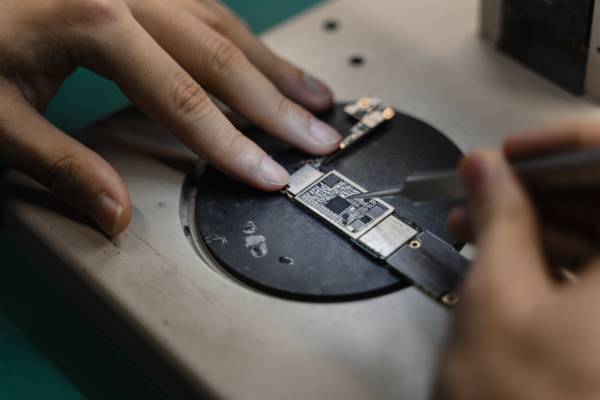Despite being very small, printed circuit boards (PCBs) are becoming more in demand among industries because of their capability to connect electrical components.
Though 30% of the global PCBs are being distributed to computer businesses, these technologies are also being used by telecommunication companies, consumer electronic manufacturers, automotive businesses, medical/industrial industries, and even the government. This isn’t surprising, considering that PCB production is driven by rapid digitalization. So, in this article, we’re explaining what a PCB is and the different types you’ll find in electronics.
What are PCBs?
Printed circuit boards are critical components responsible for the functionality of devices. By connecting multiple electronic circuits in one place, PCBs allow devices to carry out pre-programmed commands. And as previously mentioned, PCBs are becoming more in demand because of the advancements in their design. To illustrate, PCB manufacturers use rigid and flexible materials to create various components and layers. As such, the three types of PCBs vary in materials: rigid, flexible, and rigid-flex.
The differences in the material and structural design of PCBs impact the efficiency and durability of a device’s hardware.
Case in point: these innovative PCB designs allow laptops to have interconnected components that are capable of running multiple applications without sacrificing speed and performance. In contrast, Chromebooks offer more basic functions, since they have to use simpler PCB designs to accommodate price constraints.

What is a Rigid PCB?
Rigid PCBs are widely popular among manufacturers because they are relatively inexpensive compared to their counterparts.
On top of that, rigid PCBs offer strength and durability because firm materials and layers are used in manufacturing these electronic components. Typically, glass is used to create these PCBs as it protects and reinforces the interconnected electrical components.
The design of these electrical components allows them to withstand heat, chemicals, and even radiation.
While its thickness is essential in its durability, this characteristic can make it difficult for rigid PCBs to fit into most hardware designs. Furthermore, its thick and durable components can contribute to the overall weight of the device, making them less portable. Thus, though rigid PCBs are favored for their price and strength, they can only be integrated into certain devices due to their weight and thickness.
What is a Flexible PCB?
Since rigid PCBs cause physical constraints due to their material and design, an innovative PCB type was developed to offer greater malleability.
Flexible PCBs garnered their name because they can connect multiple electronic components, despite being bent, folded, and even creased into place. This distinct trait is manufactured by insulating materials, adhesives, copper foils, or conducive polyester films. Because these materials make the layers very malleable, flexible PCBs are designed with the help of measuring sensors that can increase the position detection of the components mounted onto the PCB.
This allows components to be connected precisely, regardless of the structure of the flexible materials. Through this innovative design, PCBs can be seamlessly integrated into a strict hardware layout. Though these are certainly advantageous, flexible PCBs are understandably more expensive due to their complicated design.
What is a Rigid-Flex PCB?
Recognizing the PCB’s design limitations, rigid-flex PCBs were created to surpass the restrictions and carry out the advantages of both rigid and flexible designs. This hybrid design allows rigid-flex PCBs to fit into specific mechanical housing requirements, while still being stable, dense, and sturdy. To accomplish this, this PCB design is incorporated with both rigid and flexible materials, as well as layers. Using these materials and layers, rigid-flex PCBs undergo a precise design process wherein the layout and overall structure of the board are organized.
This design process enables rigid-flex PCBs to bend and fit precisely into their mechanical housing. This dynamic design allows various hardware components to fit into the device while being seamlessly interconnected by the rigid-flex PCB.
PCB types: Rigid vs. Flex vs. Rigid-Flex
These PCB types are categorized based on the materials used for their component design. Given that they offer various advantages for internal components, manufacturers utilize specific PCB types depending on the device that they are producing. For instance, rigid PCBs are preferred for computers, laptops, and tablets because of their durability and strength. On the other hand, medical equipment manufacturers prefer flexible PCBs since they can handle the functions of complex medical devices. Their thin materials make it possible for these manufacturers to create small yet efficient medical tools. Finally, rigid-flex PCBs are an ideal choice for smartphones, digital devices, and even aerospace tools.
PCBs are electric components that allow a device to run and function properly. And due to rapid advancements in technology, the materials and designs of PCBs have transformed to accommodate modern tech innovations. Now, there are three types of PCBs, each of which is crucial for manufacturing all kinds of electronics.





